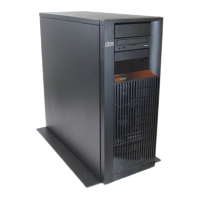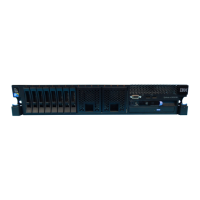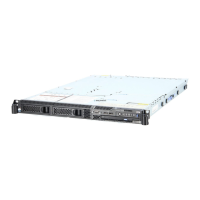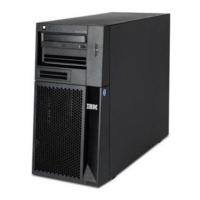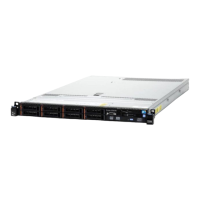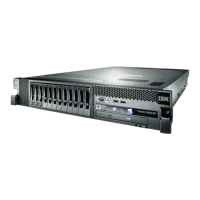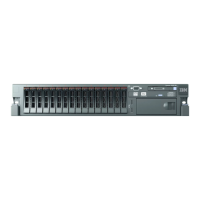Is Normal or Auto mode on the control panel selected (see iSeries Service
Functions)?
Yes No
↓ Select Normal or Auto mode on the control panel.
This ends the procedure.
2. Use DSPSYSVAL (the Display System Value command) to verify that the
system value under QPWRRSTIPL on the Display System Value display is
equal to 1.
Is QPWRRSTIPL equal to 1?
Yes No
↓ Use CHGSYSVAL (the Change System Value command) to set
QPWRRSTIPL equal to 1.
This ends the procedure.
3. Attention: Before exchanging any part, power off the system (see “Powering
On and Powering Off the System and Logical Partitions” on page 922).
Exchange the Tower card (TWRCARD) (see “Chapter 4. Removal and
Installation Procedures” on page 617).
Note: If you exchange the tower card, you must set the system date (QDATE)
and time (QTIME).
This ends the procedure.
Analyzing Power Problems
Start Analyzing Power Problems Here
Table 4. Start Table
Symptom What You Should Do
Power Problems
There may or may not be a system reference code (SRC)
displayed on the control panel.
In addition to function 11, SRCs can also appear in
function 5. Look at function 5 and record the SRC
shown. Go to “(1xxx) System Power Control Network
(SPCN) Reference Codes” on page 64 of this manual and
find the reference code. xSeries Server (formerly
Netfinity) frames will only have the frame number
flashing on the failing unit’s SPCN card assembly, which
is visible after removing the cover.
The system attention light is off, function 5 SRCs can
exist without an attention light when function 11 through
19 is displayed on the panel.
Look at function 5 and record the SRC shown. Go to
“(1xxx) System Power Control Network (SPCN)
Reference Codes” on page 64 of this manual and find the
reference code. (Function 5 is not selectable when
function 5 SRCs don’t exist.)
System unit does not become powered on. Go to “Cannot Power On System Unit (No SRC)” on
page 38.
The system does not become powered off. Go to “System or Expansion Unit Cannot Become
Powered Off” on page 56.
IPL Problems
Chapter 1. Starting Problem Analysis 37
